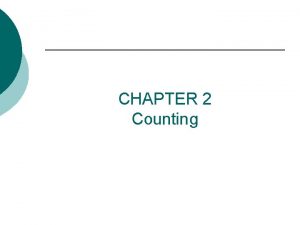Field Ecology Techniques of Field Ecology Quadrants counting





- Slides: 5

Field Ecology

Techniques of Field Ecology • Quadrants: counting the number of a particular species within a boundary set by researchers. Repeating this procedure in several locations within the ecosystem and averaging the results to establish the population density of the species in that ecosystem. • Indirect Counting: used for organisms that move around a lot—counting nests, burrows, or tracks rather than individual organisms.

• Mark-recapture: the biologist traps an animal in the study area marks them, releases the marked individual, after a period of time the researcher recaptures the animals and counts the marked and unmarked individuals in the second sample.

Mark-recapture Activity 1. Estimate the size of your population and record this number on a sheet of paper 2. One student in each group should “capture” a handful of beans 3. Count the number of beans captured and mark (color) those captured beans with your marker then place them back in the box 4. Shake your shoebox around, and the same student should reach in and take another handful of beans from the box. 1. The group should count the total number of beans captured and the number of marked beans in the second handful. 5. Estimate your bean population by putting your data in the formula below: (# beans first handful) x (# beans second handful) = estimated bean population (# of marked beans recaptured)

Carrying Capacity • Carrying capacity is the number of organisms in a population that the environment can maintain, with no increase or decrease









